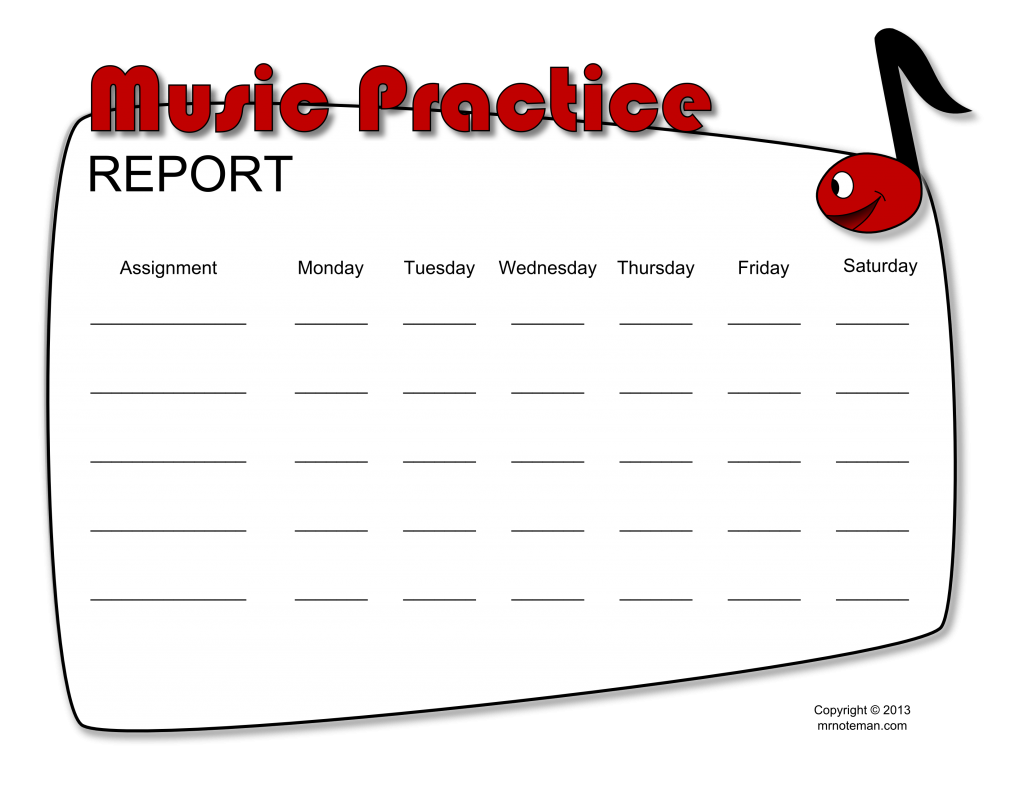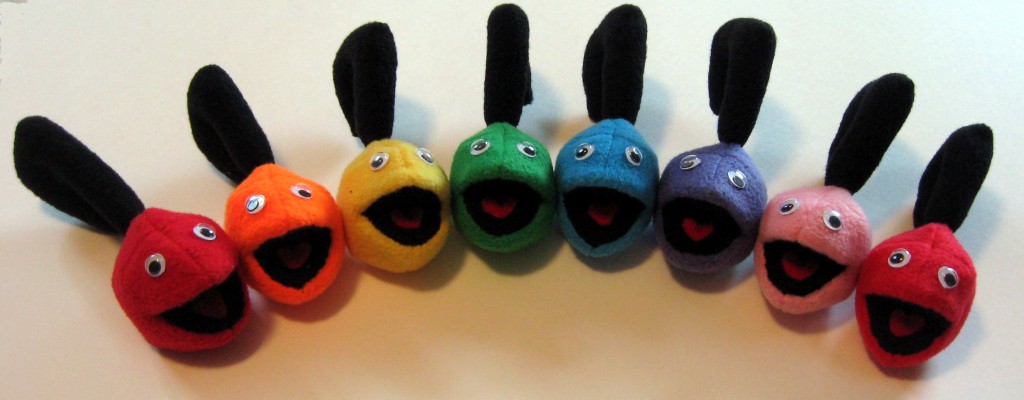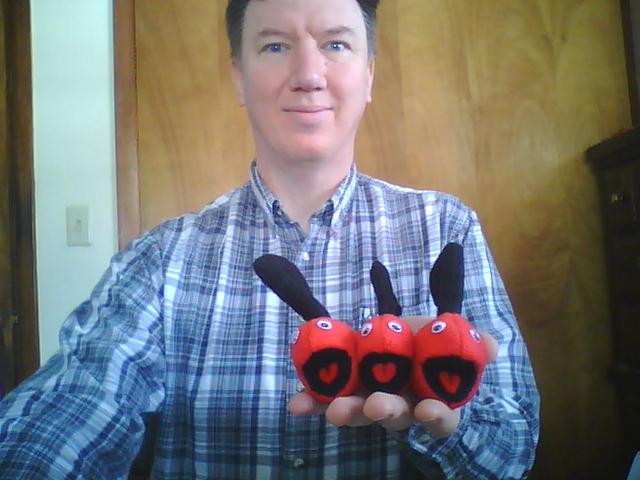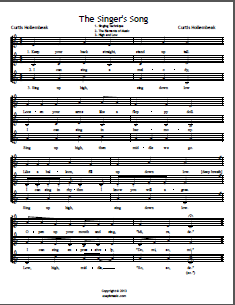At our house, we are starting instrument lessons. Here is our new Mr. Noteman music practice report chart.
Noteman Babies
I introduced the whole family of Noteman Babies to my music students this week. Within about 10 minutes, the children could identify them by name and sing their note.
The red one is Baby Do, orange is Baby Re, yellow is Baby Mi, green is Baby Fa, blue is Baby So, purple is Baby La, and pink is Baby Ti.
We played several fun games with the Noteman Babies and had a grand time. The children all did an excellent job of identifying them and singing on pitch.
Here are some colored solfege cards I made to help teach the colors to the children.
Children Innately Understand How Music Communicates
Take a group of kindergartners to a piano and ask one of them to make angry sounds on the piano. You will immediately get loud, low, deliberate banging sounds. Ask another one to play happy sounds. The child will instinctively play light, high-pitched, fast notes. Ask yet another child to make sad sounds and you will hear slow, mid-range to low, soft notes. These sounds will be created by children who know nothing of piano playing, much less traditional music theory.
What is their secret? How do they know what the music is saying?
Children innately understand that they can make sounds which mimic a person’s physical and emotional reactions. A person who is angry, for example, will make big motions, will talk in low, harsh, loud tones, and move about in a very deliberate manner. Recreating the emotion of anger on a piano then becomes simply a matter of doing the same things.
Take this exercise a step further, and you might be shocked at how proficient these small musicians are at using music to communicate. Ask a small child to think of an animal and portray that animal on the piano. See how quickly the other children can guess what the first child is thinking. In my experience, usually within 1 or 2 tries, the other kids know what animal was being “played” on the piano.
Music has the capability to communicate on so many different levels. It can communicate the emotions of anger, happiness, sadness, loneliness, joy, satisfaction, discontentment, and any other feeling you might experience. Music communicates physically, mentally and spiritually. And children are very much aware of this.
Years ago, when my children were very small, probably 2-4 years old, I played a CD for them of John Phillips Sousa marches, played by a marching band. Their response was obvious and immediate. They merrily started marching around the house in a perfect parade line, waving flags and stepping in time to the music. This was not something I taught them.
Children innately understand how music communicates.
So, What About Colored Notes?
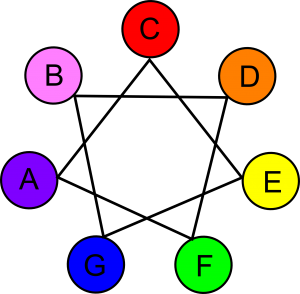 Coloring notes to indicate different pitches is not a new concept. The problem is, there is no standard accepted color associated with each pitch. Probably the most common color scheme today would be the “Chroma-Notes” colors used by Boomwhackers. This system makes allowances for blended colors on the flats/sharps. The thinking behind these colors is discussed on this page.
Coloring notes to indicate different pitches is not a new concept. The problem is, there is no standard accepted color associated with each pitch. Probably the most common color scheme today would be the “Chroma-Notes” colors used by Boomwhackers. This system makes allowances for blended colors on the flats/sharps. The thinking behind these colors is discussed on this page.
Candida Tobin used her own system of colors for teaching beginning music students with great success. The colors seem to have been chosen arbitrarily.
The “We Hear and Play” system for teaching absolute pitch was used by the Tanedas when training very young children to play piano. Again, the colors chosen seem to be in random order.
| Boomwhackers | Tobin | Taneda | |
|---|---|---|---|
| C | Red | Yellow | Red |
| D | Orange | Purple | Yellow |
| E | Yellow | Orange | Green |
| F | Lime Green | Brown | Orange |
| G | Teal | Red | Blue |
| A | Indigo | Blue | Gray |
| B | Magenta | Green | Brown |
Here’s the color scheme that makes the most sense to me at this point, especially when using these colors with small children (try using “indigo” or “magenta” with kids, for example). The Mr. Noteman system would be a slight modification of the rainbow colors (ROYGBIV), close to the Boomwhacker designations.
Proposed Mr. Noteman Coloring System
C – Red
D – Orange
E – Yellow
F – Green
G – Blue
A – Purple
B – Pink
I do not know how extensively I would use colored notes for teaching pitches. I am very leery of getting too far away from teaching what music looks like when encountered in the “real” world. I do know that for small children, colors are very much less abstract than trying to decipher a notehead’s location on a staff.
Candida Tobin Got It!
Now, here’s a lady who knows how to teach music to small children! You’ve got to watch this video. Notice her use of rhythm manipulatives as well.
Candida Tobin introduces harmony
Here’s the story about how I happened to discover this video. In my last couple of posts, I introduced the Noteman Babies. My plan is to make them in 7 different colors and correlate them to the 7 pitches in the musical scale. Boomwhackers use this method, for example. I can think of tons of music learning games that could make use of these cool music education toys. (By the way, I introduced the Noteman Babies to my elementary music classes this week, and the kids really loved them!) I discovered that my music notation software, MuseScore, has the ability to print colored note heads, corresponding to the Boomwhacker colors. During the process of learning about all of this, I found a reference to a guitar teacher who used the Candida Tobin method, so I had to find out more.
I love her approach, but would probably go with the closer-to-a-standard colors of the Boomwhackers.
If you like this, you’ve got to go here to download another video about her system: http://tobinmusic.co.uk/content/video/requestVideo.htm
Highly recommended!
Aren’t They Cute?
Here’s a trio of Baby Noteman bean bags, singing a happy song just for you.
Written music for this song can be found here.
Podcast: Play in new window | Download
Snowlfege
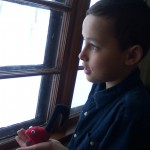 I have been designing a small Mr. Noteman bean bag to use in my music education classes. I finished my latest model last night, so first thing this morning, I showed him to my children, and let them play with him.
I have been designing a small Mr. Noteman bean bag to use in my music education classes. I finished my latest model last night, so first thing this morning, I showed him to my children, and let them play with him.
As I walked through the living room a little bit later, my nine-year-old son was holding Mr. Noteman by the front window. We are in the middle of a snowstorm here in northern Illinois, and apparently my son was letting Mr. Noteman look out the window.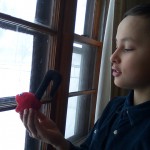
He declared, “Mr. Noteman really likes this kind of weather.” I thought that was kind of cute, but then, I started laughing loudly when he began to sing, “Do, re, mi, fa, snow, la, ti, do!”
Needless to say, my son was rather pleased with himself for his little funny.
Is anyone interested in either a Mr. Noteman bean bag, or the pattern to make your own?
I am considering holding a coloring contest with a Mr. Noteman bean bag as the prize.
What Is Music? Part 2
For our purposes, music is defined as: a pattern of sound organized to communicate on a physical, emotional, intellectual and/or spiritual level.
- A Pattern – Patterns are what distinguish music from random noise. Even non-pitched rhythm instruments which basically produce “noise” are played in particular patterns. Pitched instruments play a pattern of vibrations, which are then put into rhythmic patterns.
- Of Sound – Music is the art form dealing with sounds. Other effects can be added to or associated with music, such as visual effects, but the word “music” refers exclusively to aural vibrations.
- Organized – Music is performed on purpose. Whether it is a person sitting on a hollow log beating out a rhythm or a first chair violinist, the composer/artist/performer organized a pattern of sounds to suit his own taste.
- To Communicate – Music is a tool of communication, just as any other art form. It has it’s own capabilities to mimic movement, emotions, ideas, and physical objects. It can be constructed in such a way to carry a message from the performer to the listener, whether the ultimate audience is himself, God, or others.
- On a Physical, Emotional, Intellectual, or Spiritual Level – Music speaks to the listener on multiple planes simultaneously. The rhythm is capable of completely bypassing the intellect to speak directly to the body. The melody can communicate with the intellect and spirit of a man. The harmony can please or displease a person’s aesthetic sensibilities. The structure of a piece, and it’s expressive elements all say something to the listener.
As a tool of artistic communication, music has the ability to amplify any message the composer or performer wishes to convey. It can be, and has been, used for both good and evil purposes. It is, therefore, vitally important that we become aware of what is being communicated, and how it is being communicated.
Mr. Noteman wishes to be a help in training young people to understand how music communicates, and then learning to use music as a power tool to glorify God, and to be a blessing to others.
What Is Music?
Do a simple internet search to find the answer to this question, “What is music?”, and you will discover there are multitudes of opinions as to what constitutes music. Some opinions are so esoteric as to be laughable. Other definitions are so flowery that the reader ends up having no idea whatsoever what they just read. However, I think all would agree music consists of sound. I also think most people would recognize music contains organized sounds of some sort, as opposed to random, non-packaged noises.
How much of music is art or science is immaterial, I think, because for our purposes, the function of music is to communicate. Organized sounds have the capability to intrinsically deliver a message to the listener. Whether it is a simple beat pattern that causes us to tap our foot, or a complex classical symphony that stimulates us emotionally, intellectually and spiritually, music creates a response of some type in the listener which is discernibly different from the response induced by hearing random noise.
So, Mr. Noteman believes music can be defined as: a pattern of sound organized to communicate on a physical, emotional, intellectual and/or spiritual level.
Because music is such an incredible tool of communication, it is desirable for us to become students of it’s forms, and learn to master the basic skills of music, so we might be able to better discern it’s messages, and be able to communicate to others through this medium.
Even small children can learn to communicate to others through the manipulation of sound.
And this is what Mr. Noteman is all about.
A Song for Elementary Music Educators
I’m calling it “The Singer’s Song.” Part one teaches good singing technique. Part two covers the main elements of music: melody, harmony, rhythm, and expressive elements. Part three teaches the concept of high and low notes. Put them all together for a wonderfully harmonious and fun canon.
Let me know what you think!
Free music download here:
>>>>The Singer’s Song<<<<


